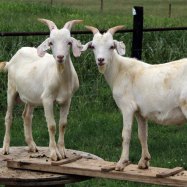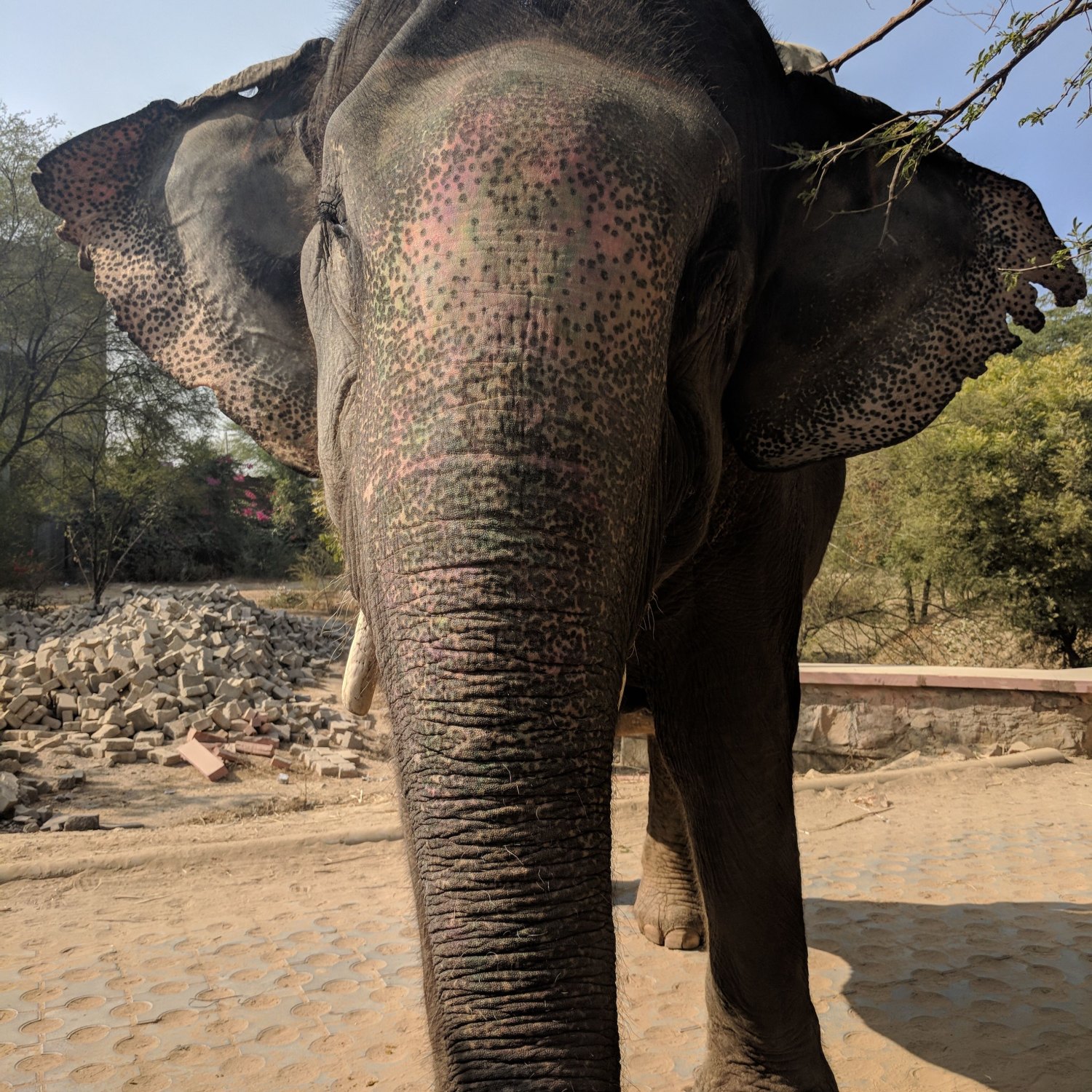
Indian Elephant
6 to 11 feet (1.8 to 3.3 meters)
The majestic Indian Elephant, part of the Elephantidae family, is a true wonder of South and Southeast Asia. With a body shape that is large, sturdy and barrel-shaped, these gentle giants can reach lengths of 6 to 11 feet (1.8 to 3.3 meters). Marvel at their impressive size and strength as you witness them in their natural habitat. #IndianElephant #Elephantidae #SouthAsia #SoutheastAsia #Wildlife #Nature
Animal Details Summary:
Common Name: Indian Elephant
Kingdom: Animalia
Habitat: Grasslands, forests, and wetlands
The Magnificent Indian Elephant: A Majestic Creature of South Asia
Nature has blessed us with an incredible variety of wildlife, each with its unique features and adaptation to the environment. Among these magnificent creatures is the Indian Elephant, also known as Elephas maximus. This gentle giant is a beloved and iconic species that roams the grasslands, forests, and wetlands of South and Southeast Asia. Its sheer size, intelligence, and sociable behavior have captured the hearts and imaginations of people for centuries Indian Elephant. In this article, we will delve into the world of the Indian Elephant and discover what makes it such a fascinating and cherished animal.Taxonomy and Habitat
The Indian Elephant belongs to the Animalia kingdom, the Phylum Chordata, and the Class Mammalia. It is part of the Proboscidea order, which includes other elephant species like the African Elephant and the mammoth. The Indian Elephant is a member of the Elephantidae family, making it a close relative of the African elephant and the extinct woolly mammoth.Indian Elephants have a vast range of habitats that stretch across several countries in South and Southeast Asia. They can be found in India, Nepal, Bhutan, Bangladesh, and Sri Lanka. These gentle giants are highly adaptable and can thrive in various environments, but they prefer areas with abundant water sources, such as grasslands, forests, and wetlands. Their habitat needs are essential for their survival, as they require vast areas to roam and find food.
Feeding and Adaptation
As herbivores, the primary diet of the Indian Elephant consists of plants, roots, bark, and fruits Indian Cobra. They are often referred to as "grazers" and can spend up to 16 hours a day foraging for food. These magnificent creatures have adapted to their herbivorous diet by developing a set of large and powerful molars that allow them to grind and digest tough food.In addition to their specialized molars, Indian Elephants have a unique muscular trunk that is used for feeding and drinking. The trunk is a fusion of the nose and upper lip, and it is surprisingly dexterous and agile, allowing the elephant to grasp and manipulate objects with ease. This adaptation also enables them to drink, bathe, and communicate with other elephants.
Physical Characteristics
The Indian Elephant is a behemoth of an animal, with a body shape that is distinct and characteristic. They are the largest land mammals in Asia, with a height ranging from 5 to 11 feet (1.5 to 3.3 meters) at the shoulder. Their weight can vary from 5,000 to 12,000 kg. They are unmistakably sturdy, with a barrel-shaped body that is supported by four thick and sturdy legs.One of the striking features of the Indian Elephant is its impressive tusks. Male elephants have significantly larger and more curved tusks than females, which they use for digging, stripping bark from trees, and fighting. These tusks, made of ivory, are unfortunately highly sought after in the illegal ivory trade, making poaching a significant threat to the species.
Geographical Distribution
The Indian Elephant can be found in various countries, including India, Nepal, Bhutan, Sri Lanka, and parts of Bangladesh. However, their numbers have significantly reduced due to human activities such as poaching and habitat loss. As of 2017, there were approximately 27,000 to 34,000 Indian Elephants left in the wild, with India being home to the most significant population.The Indian Elephant and its habitat play a vital role in maintaining the ecological balance of the regions where they live. As they graze and move around, they create paths, making it easier for other animals to access food and water sources. They also disperse seeds through their feces, contributing to the growth of plants and trees. This demonstrates the significant impact that these gentle giants have on their surrounding environment.
Behavior and Social Structures
The Indian Elephant is an incredibly social animal, living in tight-knit family groups known as herds. A herd is usually led by a matriarch, an older female, and consists of her offspring. The males, also known as bulls, tend to live their lives as solitary animals, only joining herds during mating season. These herds can become quite large, with up to 100 individuals, but they often split into smaller groups for ease of movement and foraging.The social structures of elephant herds are complex and dynamic, with strong bonds formed between members. Elephants are highly intelligent animals, capable of showing empathy, communicating with different vocalizations, and displaying a range of emotions. They are also known to mourn the death of a herd member, further emphasizing the emotional depth and intelligence of these creatures.
Conservation Efforts
With the continuous decline in the population of Indian Elephants, there have been various efforts from governments and conservation organizations to protect and preserve these majestic animals. India, for example, has passed strict laws and regulations to ban the trade of ivory and protect the species from poaching.Several organizations, such as the World Wildlife Fund and the Wildlife Conservation Society, have also taken steps to support conservation efforts for Indian Elephants. They work towards providing safe and secure habitats, decreasing human-elephant conflicts, and increasing public awareness about the importance of these animals.
In Conclusion
In conclusion, the Indian Elephant is a magnificent and intelligent creature that has a vital role in the ecosystems of South and Southeast Asia. Their beautiful gray coloration, impressive size, and complex social structures make them a marvel to behold. It is our responsibility to protect and preserve these gentle giants, and it starts with raising awareness and taking action towards conservation efforts. The future of the Indian Elephant depends on our actions, and it is up to us to ensure that these majestic creatures continue to roam our planet for generations to come.

Indian Elephant
Animal Details Indian Elephant - Scientific Name: Elephas maximus
- Category: Animals I
- Scientific Name: Elephas maximus
- Common Name: Indian Elephant
- Kingdom: Animalia
- Phylum: Chordata
- Class: Mammalia
- Order: Proboscidea
- Family: Elephantidae
- Habitat: Grasslands, forests, and wetlands
- Feeding Method: Herbivore
- Geographical Distribution: India, Nepal, Bhutan, Bangladesh, Sri Lanka
- Country of Origin: India
- Location: South and Southeast Asia
- Animal Coloration: Gray
- Body Shape: Large, sturdy, and barrel-shaped
- Length: 6 to 11 feet (1.8 to 3.3 meters)
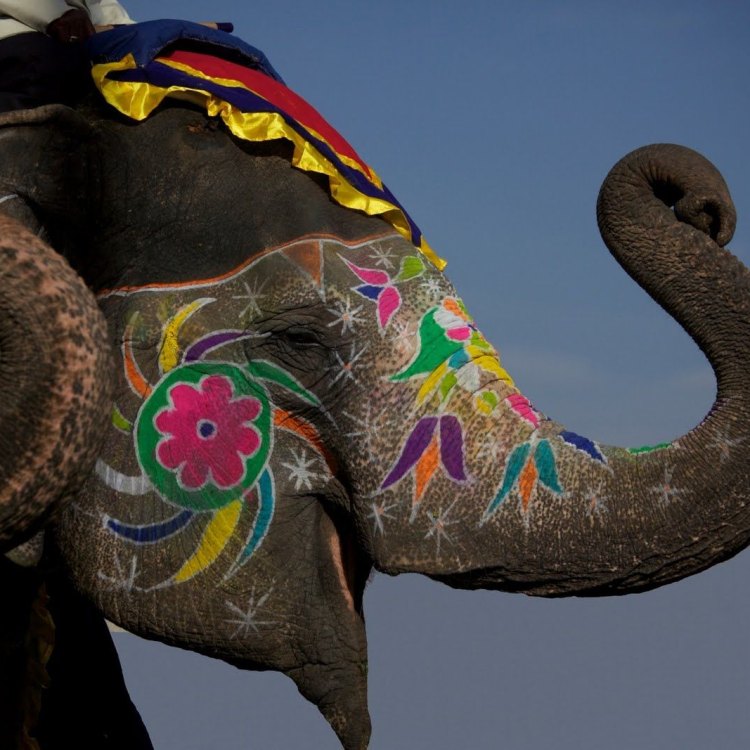
Indian Elephant
- Adult Size: 9 to 13 feet (2.7 to 4 meters) at the shoulder
- Average Lifespan: 60 to 70 years
- Reproduction: Sexual
- Reproductive Behavior: Mating occurs throughout the year, with peak activity during the rainy season
- Sound or Call: Trumpeting
- Migration Pattern: Non-migratory
- Social Groups: Live in matriarchal family groups
- Behavior: Intelligent, social, and highly adaptable
- Threats: Habitat loss, poaching, human-elephant conflict
- Conservation Status: Endangered
- Impact on Ecosystem: Key ecosystem engineer, helps in seed dispersal and shaping of habitats
- Human Use: Tourism, logging, transportation, and religious ceremonies
- Distinctive Features: Large size, tusks, trunk, and floppy ears
- Interesting Facts: Indian Elephants are the largest terrestrial animals in Asia. They have a highly developed social structure and exhibit complex behaviors.
- Predator: Humans (poaching and habitat destruction)
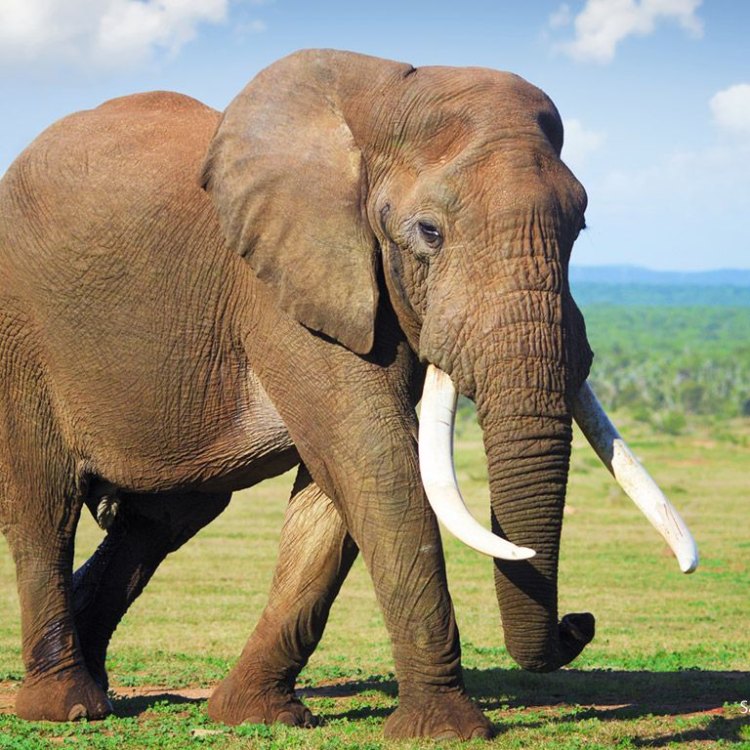
Elephas maximus
The Majestic Indian Elephant: Nature's Gentle Giant
When we think of elephants, the first image that comes to mind is usually that of the African elephant with its large, curved tusks roaming the savannas. But did you know that there is another type of elephant equally as magnificent and awe-inspiring? The Indian Elephant, also known as the Asian Elephant, is a majestic and unique species that roams the Asian continent. With its distinctive features and complex behaviors, the Indian Elephant is a species worth learning more about.Adult Indian Elephants are known to grow up to 9 to 13 feet (2 PeaceOfAnimals.Com.7 to 4 meters) in height, making them the largest terrestrial animals in Asia. These gentle giants weigh between 5,500 and 11,000 pounds (2500 to 5000 kilograms) and can live for an average of 60 to 70 years in the wild. Their sheer size and longevity make them an essential part of the ecosystem in which they dwell.
Indian Elephants have a highly organized social structure and are known to live in matriarchal family groups. These groups are led by a dominant female and consist of her daughters and their offspring. The males, or bulls, usually lead solitary lives or form smaller bachelor groups. Each family group stays within a defined home range and has specific territories for foraging, resting, and socializing. This complex social structure allows for strong and lasting bonds among family members, making Indian Elephants highly intelligent, social, and adaptable animals.
Reproduction for Indian Elephants is sexual and can occur at any time of the year Ibizan Hound. However, there is a peak in reproductive activity during the rainy season when food is plentiful. Males will compete for the opportunity to mate with a female, and the dominant male will be chosen as the father of the offspring. The gestation period for an Indian Elephant is around 22 months, and females will give birth to a single calf at a time. The mother will have a strong bond with her calf, and other females in the family group will also help in its care and protection.
One of the most distinctive features of the Indian Elephant is its large, curved tusks that are present in both males and females. These tusks, which are elongated incisors, are used for various purposes such as foraging for food, digging for water, and defending against predators. They also serve as a status symbol among male elephants during mating season. The Indian Elephant's most prominent feature is, of course, its trunk. This long, muscular and flexible organ is an essential tool for communication, sensing, and gathering food and water. The trunk also plays a significant role in caring for and protecting the young ones.
Indian Elephants are also notable for their large, floppy ears. These ears serve as a way to regulate their body temperature as they are often found in tropical and subtropical regions. The large surface area of the ears helps dissipate heat and keep the elephant's body cool. The flapping of the ears also creates a breeze and keeps mosquitoes and other insects away.
When it comes to communication, Indian Elephants have a unique way of expressing themselves. They use trumpeting as a way to communicate with each other, both for social purposes and during mating season. A male will often trumpet to announce his presence and attract females. Female elephants also use trumpeting to call for their calves or warn others of danger. Each elephant has its own distinct trumpet, which is used to differentiate between individuals and family groups.
Indian Elephants are non-migratory creatures, meaning they do not have a set migration pattern. They stay within their home range and adapt to changes in their environment. However, they are known to have seasonal movements due to the changing availability of food and water.
Sadly, the Indian Elephant faces many threats, with its conservation status listed as endangered. The biggest threat to their survival is habitat loss due to human activities such as deforestation, agriculture, and urbanization. This loss of habitat has also led to increased human-elephant conflict. As elephants' natural habitats are destroyed, they are forced to venture into human settlements in search of food, which often leads to fatal encounters. Another significant threat to the Indian Elephant is poaching for its tusks, which are highly valuable in the illegal ivory trade.
The Indian Elephant's impact on the ecosystem is significant, and their survival is crucial for maintaining a healthy and balanced environment. These gentle giants are classified as a keystone species, meaning they play a vital role in maintaining the structure and function of their ecosystem. Indian Elephants are key ecosystem engineers, and their presence has a positive impact on the environment. They help create and maintain habitats for other species by clearing paths, breaking branches, and creating waterholes. They also play a crucial role in seed dispersal, which helps in the regeneration of plant species. By shaping their environment, Indian Elephants create a diverse and thriving ecosystem.
Indian Elephants have a long history of interaction with humans, dating back to ancient times. Due to their strength and intelligence, they have been used for various purposes throughout history. In the past, they were used for transportation, logging, and in religious ceremonies such as processions and festivals. In recent times, tourism has become a significant source of income for many countries where Indian Elephants are found.
As with any other animal, the Indian Elephant also has predators. However, unlike in the wild, the Indian Elephant's most significant predator is humans. Poaching for their valuable tusks and habitat destruction caused by human activities are the biggest threats faced by these majestic creatures.
In conclusion, the Indian Elephant is a unique and fascinating species that deserves recognition and protection. With its distinct features, complex behaviors, and crucial role in the ecosystem, this gentle giant plays a vital role in the Asian continent. It's up to us as humans to ensure their survival and prevent them from becoming extinct. Through conservation efforts, educating the public, and reducing human-elephant conflict, we can ensure that this magnificent species continues to roam the wild for generations to come. Let us work together to protect and preserve the majestic Indian Elephant.
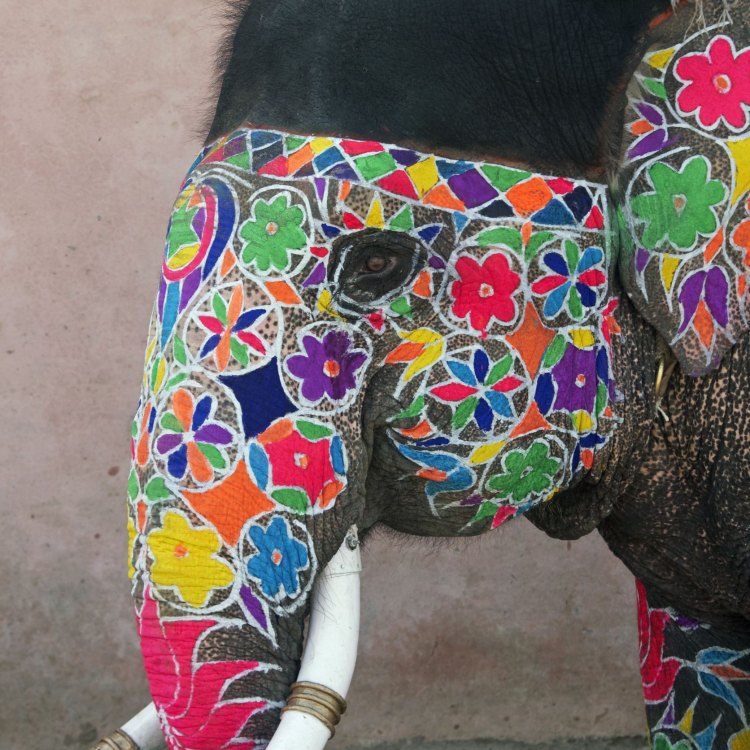
The Magnificent Indian Elephant: A Majestic Creature of South Asia
Disclaimer: The content provided is for informational purposes only. We cannot guarantee the accuracy of the information on this page 100%. All information provided here may change without prior notice.











